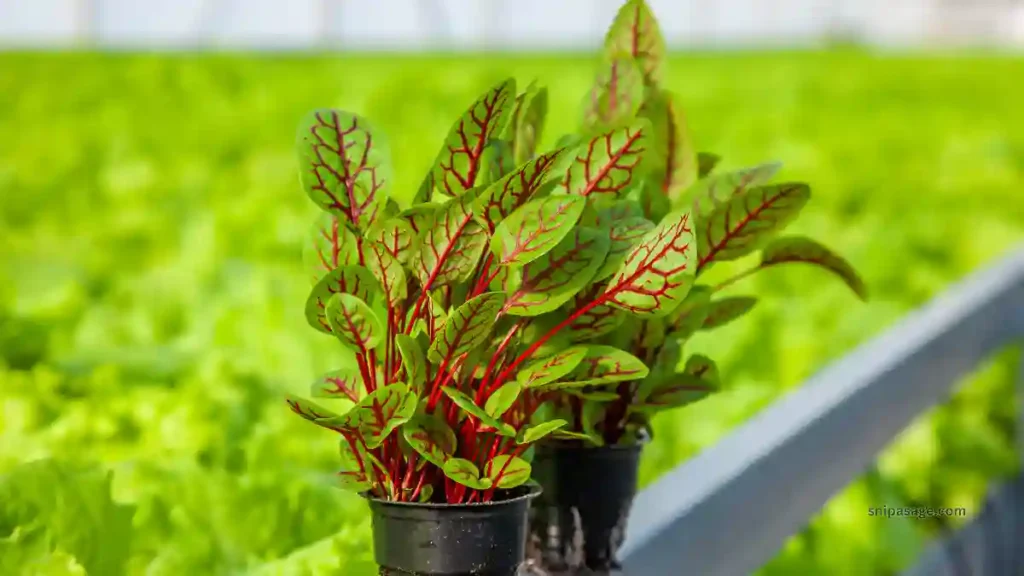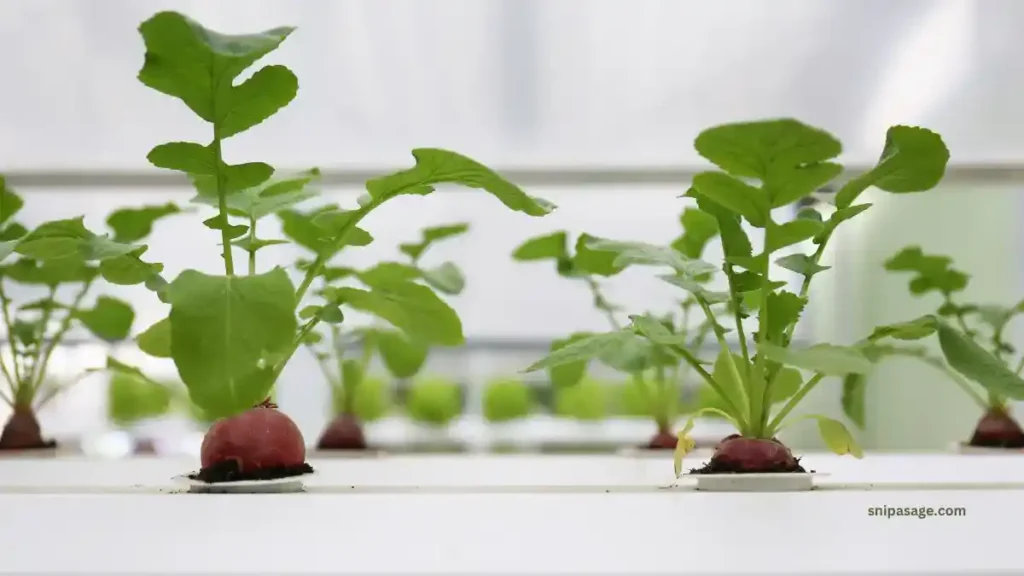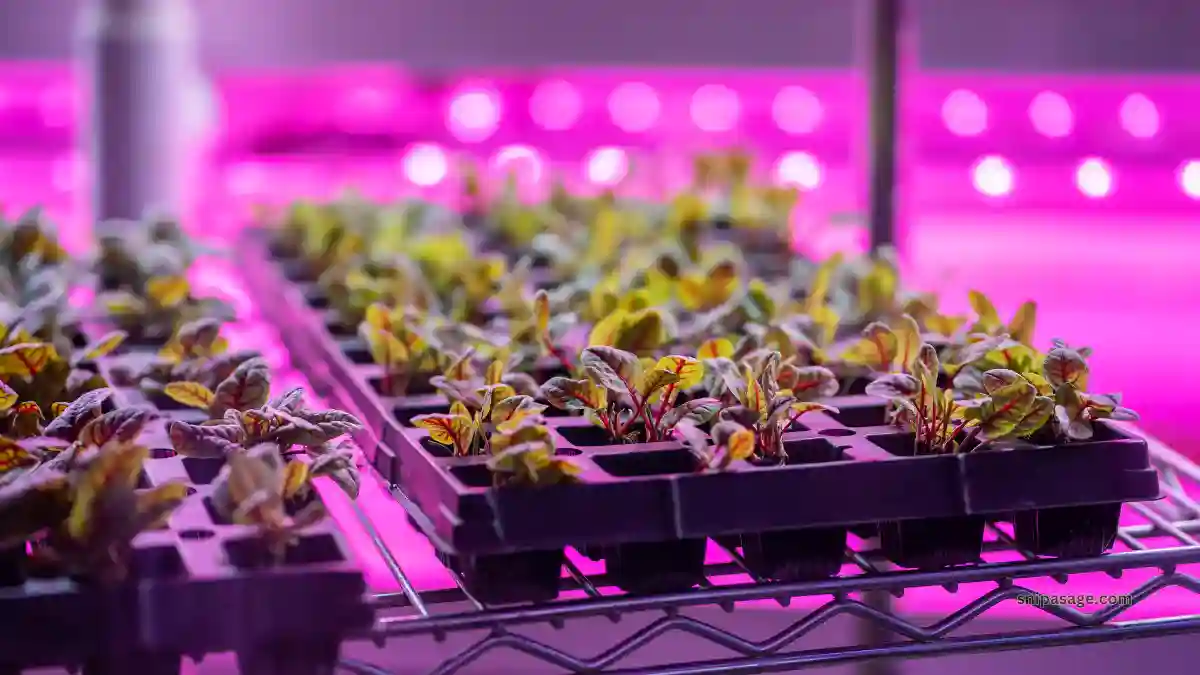Hydroponic beet farming can be a way of growing vegetables since it is one of the fastest and easiest ways to grow the crop. With hydroponics, you can control the environment, nutrients, and other factors that influence plant growth. It takes off the burden of soil requirements when growing beet in limited spaces. Hydroponics also helps in water conservation and avoids fertilizer wastage, thus making it a more sustainable method for the production of beet.
Best Way to Grow Hydroponic Beets
How to Germinate Beetroot Seed in Hydroponics
To cause the germination of beet seeds under a hydroponic system, you need to concentrate on water and heat. Start by soaking your beet seeds for a few hours in the water before putting them into some good growing media like coconut coir in a hydroponic tray. It would help if you kept the temperature constant between 60-75°F (15-24°C) while ensuring that there is enough water for the seed to properly grow.
Transplanting: Beetroot Seedlings
Move young beet plants once they have developed the first true leaves. When relocating them, be cautious not to snap their fragile roots. There should be adequate space in the selected medium for optimum growth of seedlings.
Growing Medium
The choice of material becomes very important when it comes to growing beets through hydroponics. They are both appropriate mediums, allowing air inside while keeping moisture around these root vegetable plants.
Choose Your Container:
Grow Hydroponic Beets in 3-Inch Net Pots
When growing hydroponic beets, using 3-inch net pots is recommended since they allow enough air circulation around the plants without flooding them with too much water. These pots keep your plants firm and let nutrient solution reach your roots well.

Container for Growing Beets in Hydroponics
Choose containers that will allow excess water to drain out easily so that it does not become too wet. The size of the container is determined by how you are growing beets and their population. It must be made from safe materials with no harmful substances.
Hydroponic Environment
PH & EC
The pH level should be maintained between 6.0 and 6.5 in order to have better absorption of nutrients by the plants. Always monitor the Electrical Conductivity (EC) of nutrient solution so it stays within the recommended levels, which in most cases is 1.2 to 2.0.
Temperature
Beets prefer temperatures within the range of 60-75°F (15-24°C). It is important to keep temperature fluctuations low as it helps them grow better.
Nutrient Solution
Create a nutrient mixture containing nitrogen, phosphorus, and potassium, among other essential elements required for beet growth. Consult your nutrient solution package to identify the suggested quantity and increase it gradually as your crops get older.
Lighting
They require at least 12-16 hours of light daily. Actually, this broad spectrum of light also includes both red and blue lights that are either natural sunlight or LED grow lights.
Beet Growth Stages

Germination
Seeds will usually take about seven to fourteen days before they start sprouting nicely; therefore, ensure that their medium remains slightly wet always, but when little plants begin sprouting, change their lighting so that they strengthen themselves.
Check on material moisture and temperature regularly; when plants have two real leaves, transplant them into the earth, ensuring they receive enough water, light, and nutrients for healthy growth.
Spacing
While planting beets, always ensure that there is a space of approximately 4-6 inches apart from one another. It ensures air circulation around them and also prevents them from being too close together. Crowded plants can catch fungal infections, grow poorly, and remain tiny. Also, the gardener should have adequate space to pull out weeds easily as well as access the plants when watering.
Selecting the Best Beet Varieties for Hydroponics
Some of the best varieties that are best suited for hydroponics include Detroit Dark Red, Red Ace, and Early Wonder Tall Top. These are apt for hydroponics because they produce a good supply of beets, resist diseases, and are easy to grow. Furthermore, they appear deep red hence ideal for harvesting.
Harvesting
Harvest beets when they reach a desired size, usually about 1.5 to 3 inches in diameter. Use a sharp knife to cut off the roots just above the beetroot flesh. Do not wash before storing such vegetables. Keep a dark place such as a cellar or root cellar at temperatures between 32 and 40 degrees Fahrenheit; this will save them up to two months.
Hydroponic Systems for Growing Beets
One perfect method used in hydroponics is The Nutrient Film Technique (NFT) System of Growing Beetroot Plants Hydroponics. It supplies water and nutrients consistently throughout.
The process starts by planting seeds into growth media like rock wool cubes or coconut coir, then transplanting them into NFT channels when their height reaches approximately 2 inches. Monitor nutrient levels, pH levels, light intensity, and temperature, among other factors, on a regular basis, adjusting according to the plant’s growth rate.
When your ready-to-harvest hydroponic beets have been growing for approximately 6 weeks or even longer subsequently, you may cut the plant stem at the base after checking its root, reaching about 1.5 – 2 inches in diameter. Before eating or storing, the beets need to be thoroughly rinsed.
For the statistical data or table, I came across one source that had some information about hydroponic beet yield compared to soil-grown beets. Here is a summary of this in a table format:
| Treatment | Yield (kg/m2) | Sugar content (%) | Root diameter (cm) |
| Hydroponic | 2.83 | 16.5 | 5.8 |
| Soil | 1.67 | 14.2 | 4.2 |
Can You Grow Hydroponic Beets in Aero Garden?
Yes, Aero Garden can be used for growing hydroponic beetroot, especially the small varieties. Make sure there is proper space and observe the plant as it grows to avoid overcrowding.
What are the differences between Swiss Chard and Beets?
Although they belong to the same family, beetroots are grown for their roots, while Swiss chards are cultivated for their leafy greens. When deciding between them, consider taste preferences. Swiss chard tastes slightly sour and pairs well with spicy foods, whereas beets have a less sweet flavor suitable for both sweet and savory meals. Both vegetables offer various health benefits; thus, preference is key when choosing one or the other.
Managing Pests and Diseases in Hydroponic Beet Gardens
Preventively maintain a healthy system and regularly check its performance. If issues arise, use organic insecticides or soaps to eliminate pests and insects, and promptly remove any affected parts to prevent disease spread. Ensure cleanliness regarding gardening tools and equipment maintenance. Along with providing the right amount of water and food, this protects plants from diseases, pests, and bugs, facilitating quick removal if spotted.
Key points:
Could you still grow hydroponic beetroot? Remember this point for the next time you want to germinate beet seeds without soil using hydroponics.
Choosing Seeds:
Select quality seeds from reputable sources. Decide whether regular or feminized seeds suit you best, or whether auto-flowering or photoperiod plants fit your preferences.
Materials Needed:
Assemble everything, including the HydroSeed system designed with hydroplugs, hydropods, and nutrient solutions for seed support and nurturing.
Planting Seeds:
Place seeds into hydroplugs about 0.5 to 1 inch deep. Keep the plugs warm and moist until germination, which may take 7-14 days, depending on temperature conditions.
Transplanting Seedlings:
Once seedlings have two or three true leaves, transfer them into hydropods. Place these pods in the NFT system, where roots constantly receive nutrients and water.
Monitoring Conditions:
Regularly check the pH and nutrient levels of your solution. Watch out for light and temperature fluctuations in the environment to enhance good crop development.
Harvesting:
Harvest beetroot when roots become approximately 1.5-2 inches wide, typically taking around six to eight weeks. Cut stems at the base of plants and wash beetroot thoroughly before consuming or storing it.
Some Pros and Cons About Hydroponic Beets:
For germinating beet seeds without soil through hydroponics, a nutrient solution along with a medium is employed to support seed growth. Certain factors make hydroponics suitable for beets, while others do not.
| Advantages: | Disadvantages: |
| Faster and More Even Sprouting: Beet seeds sprout quicker and more evenly compared to using soil. | Higher Costs to Start and Keep Going: Starting and maintaining hydroponics costs more initially because it needs special equipment and careful watching. |
| Higher Yield and Better Quality: Beetroots grow better and are of higher quality because they get all the nutrients they need without any obstacles. | More Likely Nutrient and pH Issues: There’s a higher chance of problems with nutrient balance and pH changes because the seeds are right in the nutrient solution. |
| Less Water and Fewer Pests: 1. Hydroponics uses less water, and there’s less risk of pests and diseases. 2. because the system is cleaner and more controlled. | Tricky Transplanting: Moving the plants can be harder because the roots might get hurt or tangled in the medium. |
Conclusion
Starting beet plants with hydroponics offers many choices for beginners and experienced gardeners alike. Healthier beetroots will be achieved if the growing environment, plant growth pattern, and nutritional value in which they grow are controlled by those who plant them. As you follow tips from this book on how to do that, I hope your hydroponic beet garden comes up with vivid coloration that tastes good, too.

